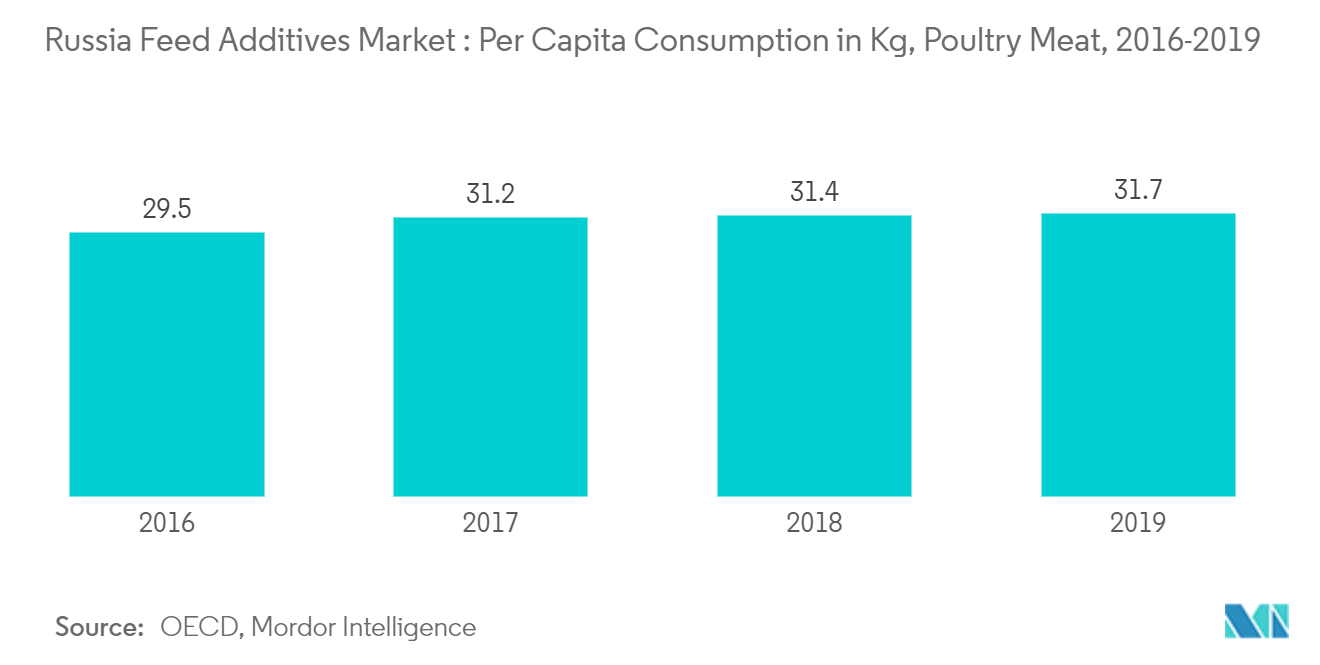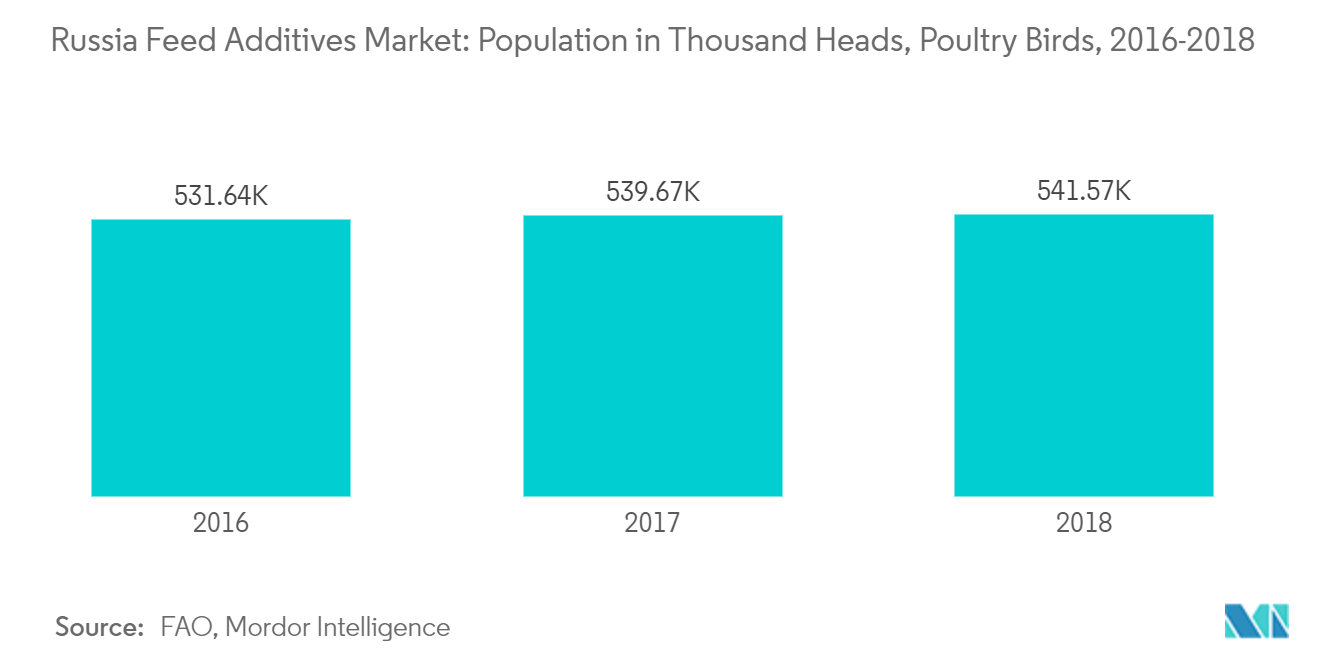Market Trends of Russia Feed Additives Industry
Growing Preference Towards Meat and Animal Products
Rising incomes and urbanization have led to a surge in livestock production and thereby increasing meat-based product consumption. According to the Organisation for EconomicCo-operation and Development (OECD), in 2019, Poultry meat is the majorly preferred meat in the market followed by pork and beef. The per capita poultry meat consumption was 31.7 Kg in 2019 as compared to 31.4 Kg in 2018. Additionally, the per capita consumption of pork and beef meat was 20.1 Kg 10.3 Kg in 2019. Among the animal types, the poultry segment held the largest market share, accounting for 52.1% of the total feed additives market value in 2022. The increase in feed production for poultry by 5.7% between 2017 and 2022 has contributed to this growth. To meet the demand, meat and milk producers tend to provide quality feed to the animals so as to meet the necessary diet requirements. Feed additives are one of the ways by which the diet requirements of the animals can be met.

Rising Poultry Production Site the Growing Feed Additives Market
According to the National Union of Poultry Breeders, by 2020, manufacturing companies note an increase in orders from retail chains by 30 percent or more, due to the formation of stocks to prevent food shortages because of short-term rush in demand. According to the forecast of the Ministry of Agriculture of Russia, in 2020 poultry production will reach 6.74 million tons, which is 0.5% more than last year. Egg production will grow by 0.1% to reach 44.91 billion. In January-March 2020, the production of poultry for slaughter in live weight in all categories of farms was estimated at 1.6 million tons, which is 2.4% more than the level of the same period in 2019. Egg production in farms of all categories increased by 1.7% to 10.7 billion pieces. This increasing poultry production will further drive the market for feed additives. According to Alltech Feed Survey, in 2019, the country had a total of 571 mills, catering to 40.5 million metric tons production of compound feed.


